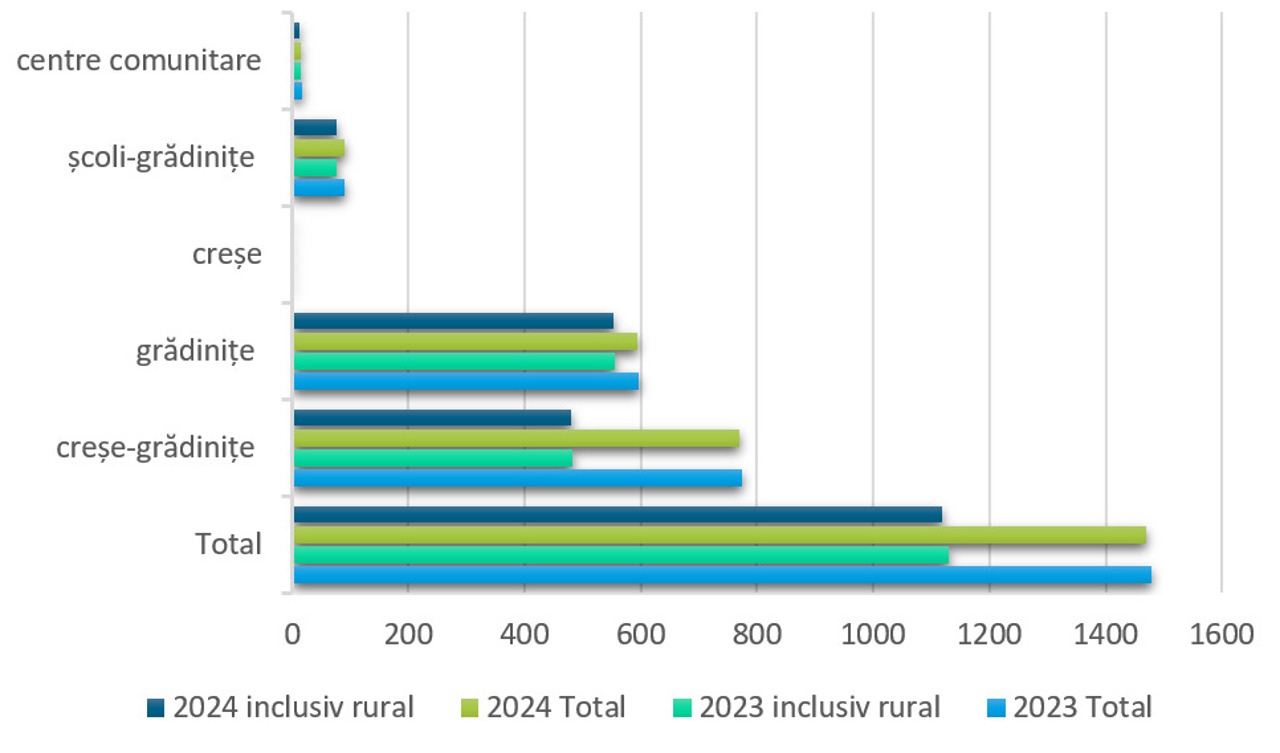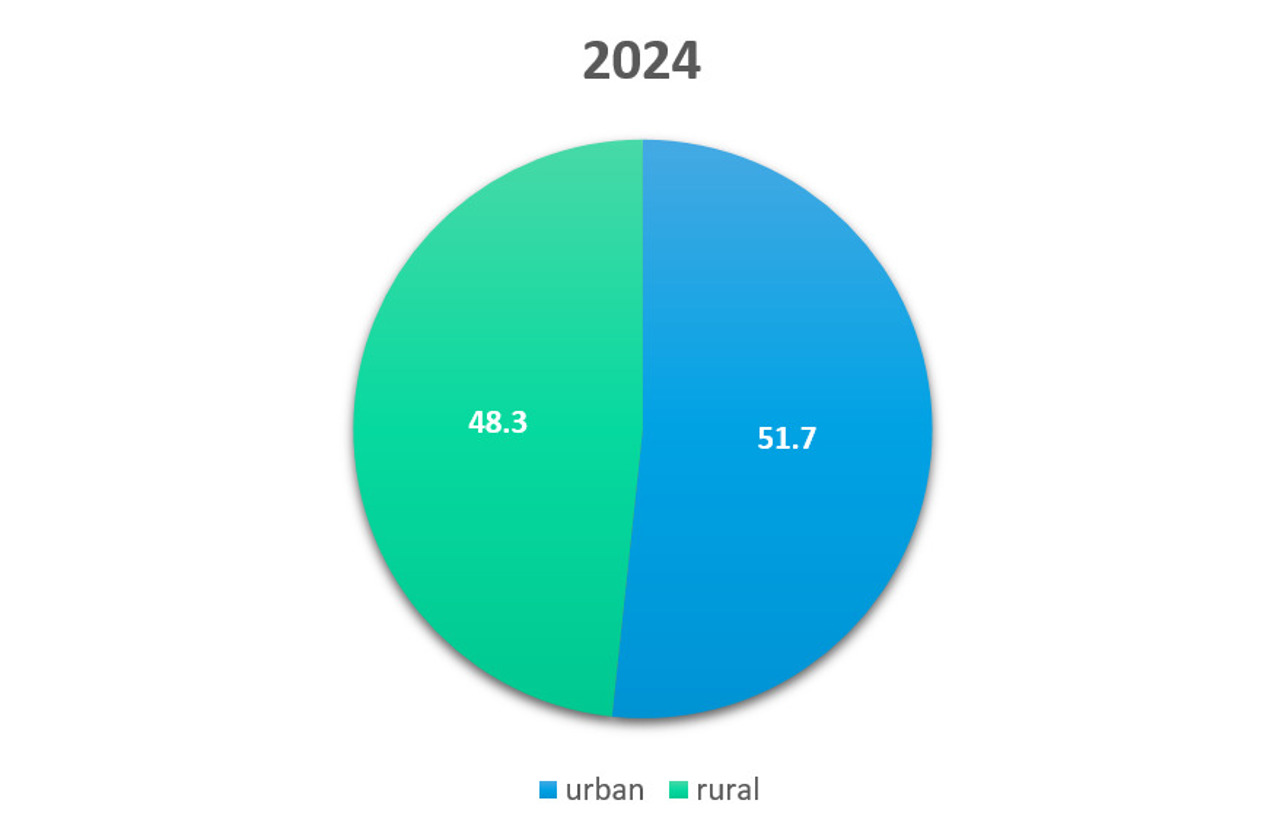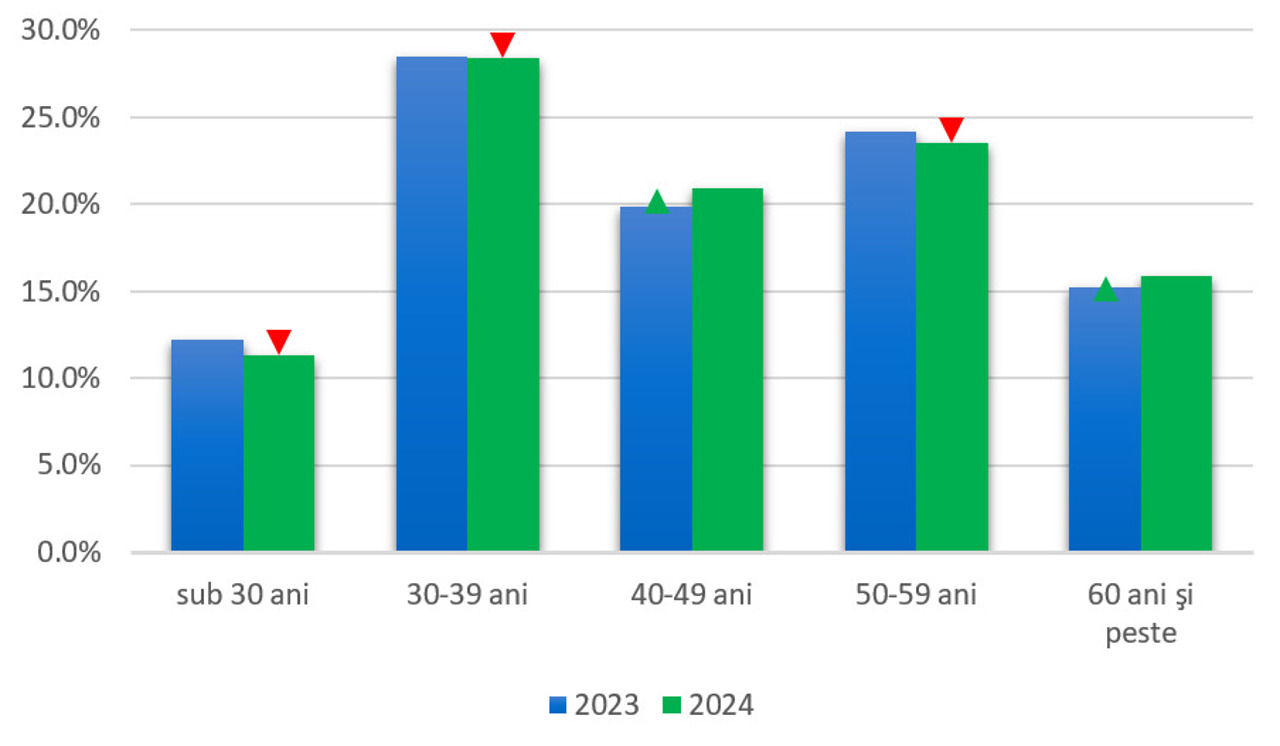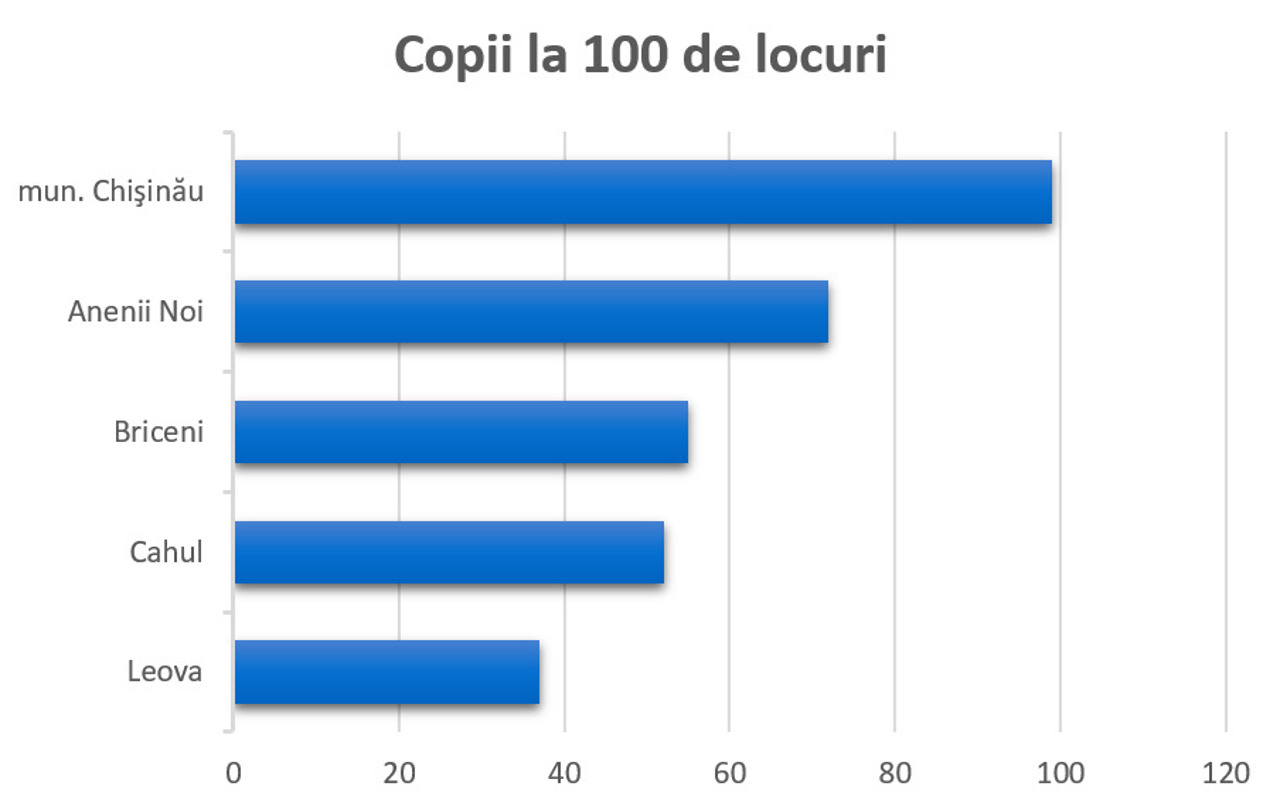Early education enrollment in Moldova drops by nearly 2%

In 2024, the number of children enrolled in early education institutions in the Republic of Moldova declined by 1.9% (approximately 2,400 children) compared to the previous year, according to official statistics.
Additionally, the number of early education institutions decreased by 10, including five nursery-kindergartens.
Viorica Negrei, Head of the General Education Management Department, attributed the drop in kindergarten enrollment to demographic decline, while the disappearance of five nursery-kindergartens as legal entities may be due to mergers with local primary schools, as explained by a representative of the Ministry of Education.

According to the National Bureau of Statistics, early education was provided by 1,469 institutions in 2024—10 fewer than in 2023. These included 769 nursery-kindergartens, 595 kindergartens, 89 school-kindergarten complexes, 14 community centres, and two nurseries.
Compared to 2023, the number of nursery-kindergartens dropped by five units, while the number of kindergartens and community centres decreased by two units each, and school-kindergartens by one.
In 2024, the total number of children enrolled in early education stood at 127,200—down by 2,400 or 1.9% from the previous year. The decline was more pronounced in rural areas, where enrollment dropped by 2.9% (or 1,800 children).

Just over half of the children (51.7%) were enrolled in urban early education institutions.
“The number of children is decreasing, and there are several reasons for this,” stated Viorica Negrei in an interview with Teleradio-Moldova.
“The first is demographic—a decline in the birth rate—and simultaneously, children leaving the country with their parents,” she explained.
Another factor behind the reduced number of children in public kindergartens is the emergence of private educational centres offering childcare services at the community level. “These centres are not officially part of the preschool education system and are not reflected in preschool statistics. We believe the children attending these centres are not included in official data,” Negrei added.
Regarding the closure of nursery-kindergartens, she noted that institutional restructuring is one reason. “For example, when primary schools or lower secondary schools are merged with kindergartens, educational complexes are formed. In such cases, the kindergarten ceases to exist as a separate legal entity, and children are counted under the newly reorganized institution, which is considered a higher-level institution under the Education Code.”
Data from the National Bureau of Statistics also reveals the age distribution of early education teaching staff in 2024. The largest share—28.4%—was held by educators aged 30–39. Meanwhile, the proportion of teachers aged 60 and above rose by 0.7 percentage points from 2023, reaching 15.9%. In contrast, the share of educators under 30 dropped by 0.9 percentage points to 11.3%.
Potrivit datelor BNS pentru anul 2024, structura pe grupe de vârste a personalului didactic din educația timpurie relevă că ponderea cea mai mare revine persoanelor cu vârsta între 30-39 ani – 28,4%. Totodată, numărul pedagogilor cu vârsta de 60 ani și peste (ponderea de 15,9 %) a fost în creștere cu 0,7 puncte procentuale, comparativ cu anul 2023, în timp ce numărul celor sub 30 ani (11,3%) a înregistrat o scădere cu 0,9 puncte procentuale.

“We’re likely to see young professionals choosing different careers, pursuing further education, or even emigrating,” Negrei commented.
She also pointed out that “those over 30 who have remained in the system are more likely to have found stability and no longer seek opportunities outside the education sector.”
As the 30-something educators leave the field, there is growing pressure to fill the staffing gap with qualified personnel, including older teachers, “since the younger generation is increasingly drawn to other sectors or leaving the country.”
Negrei also mentioned a technical reason for the declining proportion of staff under 30: “Once individuals cross the age threshold, they are automatically reassigned to the next age group in the statistical records.”
Official data further shows that in 2024, Chișinău recorded the highest demand for early education, with 99 children per 100 available places. Conversely, Leova district had the lowest occupancy, with only 37 children per 100 places.
Ala Revenco, president of the “Solidarity Parents” Association, also cited declining birth rates as a key factor.

“In the last 10 years, our birth rate has essentially halved—from around 40,000 births per year to no more than 20,000 annually,” said Revenco.
She recalled that during higher birth rate years, “Chișinău sometimes had up to 108 children per 100 available spots.” “Now, that figure has dropped to 99,” she noted. Revenco also highlighted the uneven distribution of kindergarten places, saying that some sectors, such as Ciocana and Telecentru—with numerous new apartment blocks—face severe shortages and overcrowding.
At the national level, Revenco pointed out that many local education departments “are not doing enough to attract young professionals.” “And in past years, the Ministry’s policies have not actively sought solutions, merely acknowledging the issue without taking concrete action to draw young talent into preschool education,” she added.
According to 2024 statistics, Moldova had nearly 1,470 early education institutions—350 in urban areas and 1,119 in rural ones. The total number of children enrolled was 127,200, with an average of 72 children per 100 available places.
Translation by Iurie Tataru





